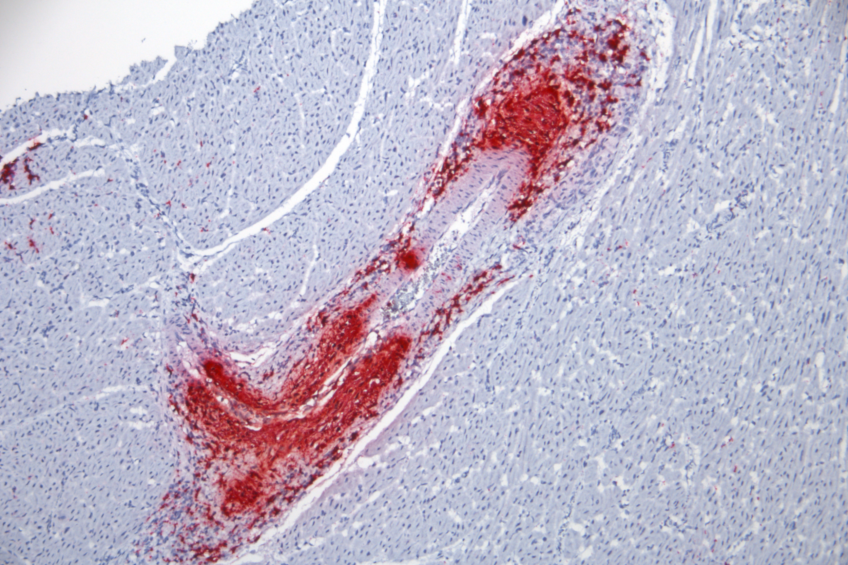PCV3 linked to heart problems in stillborn piglet

New research in Spain on Porcine Circovirus 3 (PCV3) has yielded further insights into how the virus might affect pig populations. In an Iberian semi-outdoor farm, the virus was linked to “grossly apparent myocarditis” in a stillborn piglet.
PCV3 is a sibling of the much more renowned PCV2 virus. PCV3 was first described scientifically in 2017, after which the next questions were: will the virus also cause disease, and if so, to what degree? A lot of research to PCV3 was carried out at IRTA-CReSA, at the campus of the Universitat Autònoma de Barcelona in Spain. In cooperation with researchers from MSD Animal Health and the Montesano Group in Spain, the team published their latest findings in a recent publication of the peer-reviewed journal Porcine Health Management.
Farm with 420 Iberian sows
The farm described in the study contained 420 Iberian sows. The farm was free from Porcine Reproductive and Respiratory Syndrome virus (PRRSv) and had been previously affected by PCV2 reproductive disease, which had been managed through sow vaccination.
The scientists wrote that in spring 2022, some of the animals developed reproductive disease with a high increase in the number of mummified foetuses and stillborn piglets from gilts as the most remarkable finding. Multiparous sows were not affected, they wrote, adding: “A first analysis with pooled stillborn tissues ruled out most swine reproductive pathogens and revealed detection of PCV3.”
The team researched the stillborn and mummified foetuses, to better understand the role PCV3 may have had. Pooled tissue samples yielded high PCV3 loads by quantitative PCR. Grossly, 1 out of 5 stillborns had an enlarged, flaccid heart. In addition, in 3 out of 5 cases, PCV3 lesions were found consisting of periarteritis.
The grossly affected heart had “lymphohistiocytic myocarditis with fibrosis and lymphohistiocytic endocarditis”, the team wrote. They could observe high amounts of PCV3 genome within histological lesions. When tested for PRRSv and PCV2, the results were negative.
Take-home messages from PCV3 research
The authors wrote: “This is the first report of PCV3 reproductive disease in a semi-extensive production Iberian pig farm, affecting exclusively gilts. Moreover, this is the first description of grossly apparent myocarditis associated to PCV3 infection.”
They concluded: “Therefore, PCV3 should be considered within the differential diagnostic list of swine reproductive problems in non-intensive pig-rearing production.”
The scientific article was authored by Àlex Cobos, Marina Sibila, Eva Huerta, Mónica Pérez, Laura Gálvez and Joaquim Segalés, IRTA-CReSA, Spain; Marcial Marcos, Rut Menjón and Marta Jiménez, MSD Animal Health; and Laura Gálvez, Montesano Group, Spain.











